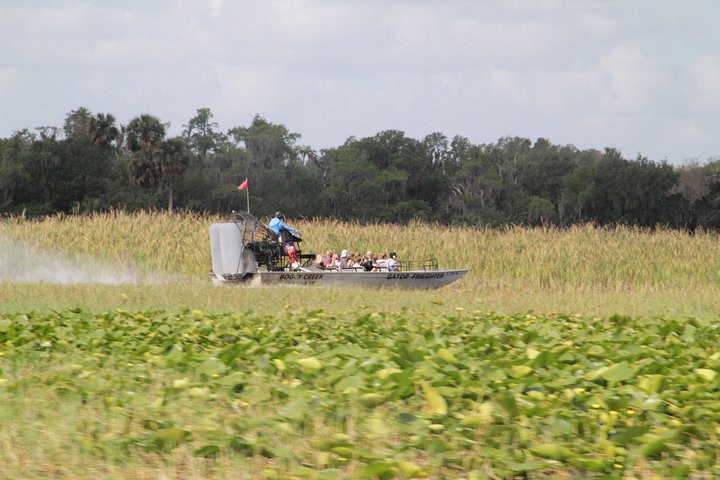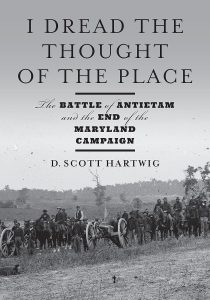Volusia County History: A Bibliography with links

Volusia County History A Bibliography with Links
Volusia County is located on the east coast of Florida and is home to more than 550,000 residents and growing daily. The county is currently a prime retirement area for transplants. Read further to discover my Volusia County History bibliography with links. It will help guide you to relevant source material, much of it easily obtainable.
County management is handled by an elected County Council consisting of two at-large members and five district elected members. The Chair position is one of the at-large members.
In 2021, nearly ten million visitors came to Volusia County. Many came to enjoy the “World’s Most Famous Beach,” while others arrived for NASCAR and other racing events, while Bike Week and Biketoberfest continue to draw strong crowds. Events such as the November Turkey Run, spring break, and the multi-day Welcome To Rockville concerts bring short-term visitors to the county. The Ocean Center draws sporting events, conventions, and the occasional concert which help put “heads in beds.”
While tourism is a main draw, the county has a wide and varied history consisting of colorful characters and events. This bibliography is my attempt to bring together a listing of material for readers related to Volusia County history. The term “history” is open to interpretation. I will try to be lenient in my use of the term.
I am providing links when I can so that you can purchase, or if possible, download or read online, for yourself. Materials may be available through the Volusia County Library system. Please check there. Even if it is not in your local branch, books can be sent to your preferred branch. Some books may be non-circulating such as those in genealogy collections and you will need to visit a particular location.
A couple of things about this bibliography. It is not meant to be all inclusive. This is an ongoing project and I invite your input with works I have not included. Also, new material is being published consistently. I try to keep up but this is a one person operation. Updates will be made to the list as required.
I will not be linking items such as newspaper articles. Mainstream magazine articles are fair game if they appear to have value. Peer reviewed academic journal articles will be included though availability of these may be quite limited. There have been, and continue to be, many local, “freebie,” magazine and entertainment guides. Keeping up with them is nearly impossible and finding older issues is the same. Unless something truly strikes me, I am avoiding these.
I am not including links to social media pages. Most of these pages/groups are not very good and the egalitarian nature of social media means anybody with a keyboard can make a statement and way too many take them as fact. Rather than be accused of playing favorites, I am avoiding these pages altogether.
Websites and blogs that show good solid research and writing will be included. Many good historians/writers are sharing their work in these formats. YouTube channels? Maybe.
Works of fiction are not generally included in this bibliography.

I have chosen to set this listing up by city and a general county history section. My thought is that if you are looking for materials on Oak Hill you can find that heading rather than reviewing the entire list.
At the end of the list, you will find a listings of Volusia County based historical societies and museums. Be sure to reach out to these organizations if you have specific questions. There is also a section titled “people.” This is for those individuals who have made an impact on Volusia County for the better or the worse.
I make no guarantees as to the historical accuracy of the materials listed. I have not read and do not own copies of all of the sources lists. While I can certainly vouch for research standards many of the listed authors use, I recommend you draw your own conclusions. Works with foot/end notes and bibliographies are probably more reliable than those without. Notes and bibliographies allow readers to follow up on sources and verify statements.
I want this listing to be a joint project with you, the reader. If you know of sources I have not listed, please drop me a line or add a comment. Please provide as much information as possible and links if the material is digital. I will update the list with your suggestions.
I invite you to provide your thoughts on the resources listed below. If you feel a book or article is a must read, please let readers know and why you feel this way. If you think something is poor, that is acceptable. Please make sure your remarks are respectful and explain your reasoning. Is the research bad? Why do you think a work is not good? Personal attacks on authors or subject matter will not be approved for posting.
General County Histories
Dreggors, William J. and John Stephen Hess. A Century of West Volusia County 1860-1960. DeLand: West Volusia Historical Society, 1993.
Dreggors, William J., and John Stephen Hess. A Pictorial History of West Volusia County 1870-1940. DeLand: West Volusia Historical Society, 1989.
Fitzgerald, T.E. Volusia County Past and Present. Daytona Beach: The Observer Press, 1937.
Francke, Arthur E. Jr., Alyce Hockaday Gillingham, and Maxine Carey Turner. Volusia The West Side. DeLand: West Volusia Historical Society, 1986.
French, Larry. Grand Hotels of West Volusia County (Images of America). Charleston: Arcadia Publishing, 2018.
Friend, Lani. “Volusia and Vibilia: Companion Plantations on the St. Johns River in Spanish and Territorial East Florida,” Florida Historical Quarterly. Volume 97, No. 4 (2019): 379-406.
Gaby, Donald C. “Volusia; The Origin of a Name.” Florida Historical Quarterly. Vol. 76, No. 1.
Gold, Daniel Pleasant. History of Volusia County Florida. DeLand: E.O. Painter Printing Co., 1927.
Hebel, Ianthe Bond. Centennial History of Volusia County, Florida, 1854-1954. DeLand: Volusia County Historical Commission, 1955.
Langlotz, Patricia Callan. The Odyssey of an American School System: Volusia County Schools 1854-2000. DeLand: Volusia County Schools, 2000.
Minshew, Paul and Jack Towle. “The 1998 Wildfires in Central Florida: Volusia County’s Own Armageddon.” Journal of Environmental Health. Vol. 61, No. 7 (1999): p. 22-26.
Polk, Brian L. Lost in History–The Mayaca: Native People of West Volusia County, Florida. History Travels Press: DeLeon Springs, 2024.
Schene, Michael G. Hopes, Dreams & Promises: A History of Volusia County, Florida. Daytona Beach: News-Journal Corporation, 1976.
Williamson, Ronald. Volusia County’s West Side: Steamboats & Sandhills (American Chronicles). Charleston: History Press, 2008.
Barberville
Brotemarkle, Benjamin D. Barberville (Images of America). Charleston: Arcadia Publishing, 2005.
Cassadaga
Guthrie, John J. Jr., Phillip Charles Lucas, and Gary Monroe, editors. Cassadaga: The South’s Oldest Spiritualist Community. Gainesville: University Press of Florida, 2000.
Guthrie, John J. Jr., “Seeking the Sweet Spirit of Harmony: Establishing a Spiritualist Community at Cassadaga, Florida, 1893-1933.” Florida Historical Quarterly. Vol. 77, No. 1.

Courtesy Florida Memory
Daytona Beach
Atwell, Cheryl, and Vincent Clarida. Daytona Beach and the Halifax River Area (Images of America). Charleston: Arcadia Publishing, 1998.
Cambre, Dale. Daytona Beach, Florida: A Postcard Tour (Postcard History Series). Charleston: Arcadia Publishing, 1998.
Cardwell, Harold D. Daytona Beach 100 Years of Racing (Images of America). Charleston: Arcadia Publishing 2002.
Cardwell, Harold D. Historic Photos of Daytona Beach. Nashville: Turner Publishing Company, 2007.
Cardwll, Harold D., Sr., and Patricia D. Cardwell. Historic Daytona Beach (Images of America). Charleston: Arcadia Publishing, 2004.
Halifax Herald. This journal is published by the Halifax Historical Society and is a trove of information relating to the east side of Volusia County. Individual articles are not generally referenced in this listing. To the best of my knowledge there is no easy to use index for this journal.
Lamb, Chris. Blackout: The Untold Story of Jackie Robinson’s First Spring Training. Lincoln: Bison Books, 2006.
Lane, Mark. Legendary Locals of Daytona Beach. Charleston: Arcadia Publishing, 2015.
Lempel, Leonard R. “The Mayor’s ‘Henchmen and Henchwomen, Both White and Colored,’ Edward H. Armstrong and the Politics of Race in Daytona Beach, 1900-1940.” Florida Historical Quarterly. Vol. 79, No. 3.
Light, Patti. Daytona Beach Lifeguards (Images of America). Charleston: Arcadia Publishing, 2010.
Punnett, Dick. Beach Racers: Daytona Before NASCAR. Gainesville: University Press of Florida, 2008.
Punnett, Dick, and Yvonne Punnett. Racing on the Rim: A History of the Annual Automobile Racing Tournaments Held on the Sands of the Ormond-Daytona Beach, Florida 1903-1910. Self Published, 1997.
Punnett, Dick, and Yvonne Punnett. Thrills, Chills and Spills: A Photographic History of Early Aviation on the World’s Most Bizarre Airport, Daytona Beach, Florida, 1906-1929. Self Published, 1990.
Smith, Dusty. Haunted Daytona Beach (Haunted America). Charleston: History Press, 2007.
Snyder, Robert E. “Daytona Beach: A Closed Society.” Florida Historical Quarterly. Vol. 81, No. 2.
Spencer, Donald. Greetings from Daytona Beach. Atglen: Schiffer Publishing, 2008.
Strickland, Alice. “Florida’s Golden Age of Racing.” Florida Historical Quarterly. Vol. 45 No. 3 (1967): 253-269.

Daytona Beach Shores
DeBary
Brooks, Edith G. Saga of Frederick de Bary and de Bary Hall, Florida. Convention Press, 1968.

Courtesy Florida Memory
DeLand
Blake, Jason. “The Integration of Stetson University.” Florida Historical Quarterly. Vol. 82, No. 4.
Caccamise, Louise Ball. Echoes of Yesterday: A History of the DeLand Area Public Library, 1912-1995. New Smyrna Beach: Luther’s Publishing Co.
Caccamise, Louise Ball. Memory Lane: A History of the Street Names of DeLand. DeLand: West Volusia Historical Society, 2013.
DeLand, Helen. Story of DeLand and Lake Helen. Norwich: Louis W. Walden. 1928.
Hall, Maggi Smith, Michael Justin Holder, and West Volusia Historical Society. DeLand (Images of America). Charleston: Arcadia Publishing, 2003.
Hall, Maggi Smith. Stetson University (Campus History). Charleston: Arcadia Publishing, 2005.
Johnston, Sidney. “The Historic Stetson University Campus in DeLand, 1884-1934” Florida Historical Quarterly. Vol. 70, No. 3.
Lycan, Gilbert L. Stetson University: The First 100 Years. DeLand: Stetson University Press, 1983.
Roberts, L. Thomas, and West Volusia Historical Society. DeLand (Postcard History Series). Charleston: Arcadia Publishing, 2014.
Smith, Dusty. Haunted DeLand and the Ghosts of West Volusia County (Haunted America). Charleston: History Press, 2008.
Stetson University Department of History
Swygert Michael I. and W. Gary Vause. Florida’s First Law School: A History of Stetson University College of Law. Durham: Carolina Academic Press, 2006.
DeLeon Springs
Deltona
Edgewater
Sammons, Sandra Wallus, and Joanne Sikes. Edgewater (Images of America). Charleston: Arcadia Publishing, 2005.
Enterprise
Hartsfield, Stephen T. Under the Sheltering Tree: A Brief History of the Florida United Methodist Children’s Home, 1908-2008. N.P., N.D.
Holly Hill
Wiggins, Dean, and Adele Fredenberg. Gnomes of Holly Hill. Self Published, 2020.
Lake Helen
Schneider, Dorothy, and Ed L. Blackman. Lake Helen: The Gem of Florida The First 100 Years. Self Published, 2016.
New Smyrna Beach
Bockelman, Charles. Six Columns and Fort New Smyrna. DeLand: E.O. Painter Printing, Co., 1985.
Coe, Charles. Debunking the So Called Spanish Mission Near New Smyrna Beach. Washington D.C. 1941.
Cook-Wilson, Ethel. Isn’t That God’s Water? The Advent and Demise of Bethune-Volusia Beach Incorporated. Self Published, 2015.
Cumiskey, Kate. Surfing in New Smyrna Beach (Images of America). Charleston: Arcadia Publishing, 2010.
Detwiler, John Y. “Antiquities at and near New Smyrna, Florida.” Florida Historical Quarterly. Vol. 1, No. 3.
Doggett, Carita. Dr. Andrew Turnbull and the New Smyrna Colony of Florida.
Grange, Roger and Dorothy Moore. Smyrnea Settlement: Archaeology & History of an 18th Century British Plantation in East Florida. New Smyrna Beach: Southeast Volusia Historical Society, 2016.
Griffin, John W. and Robert H. Steinbach. Old Fort Park and Turnbull Canal System Archaeological Survey Project New Smyrna Beach, Florida. St. Augustine: Historic Property Associates, 1990.
Hudson, Fannie Minson. History of New Smyrna Black Businesses (with Present Area Businesses). Self Published, 2006.
Knighton, Annie Meeks. Bethune Beach Memoirs: A Pictorial History. Self published, 2014
Luther, Gary. History of New Smyrna: East Florida with Illustrations. New Smyrna Beach: Luther’s Publishing, 2009.
Panagopoulus, Epaminondes P. New Smyrna: An 18th Century Greek Odyssey. 1966.
Poertner, Bo. Old Town By the Sea: A Pictorial History of New Smyrna Beach. Overland Park: Walsworth Publishing. 2002.
Redd, Robert. Historic Sites and Landmarks of New Smyrna Beach. Charleston: History Press, 2015.
Redd, Robert. New Smyrna Beach (Postcard History). Charleston: Arcadia Publishing, 2016.
Sheldon, Jane Murray. “Seminole Attacks Near New Smyrna, 1835-1856.” Florida Historical Quarterly, Vol. 8 No. 4 (1930): 188-196.
Sweett, Lawrence J. New Smyrna Beach (Images of America). Charleston: Arcadia Publishing, 2006.
Sweett, Zelia V. New Smyrna Beach (Then and Now.) Charleston: Arcadia Publishing, 2018.
Sweett, Zelia Wilson. New Smyrna, Florida in the Civil War. DeLand: West Volusia Historical Commission, 1963.

Oak Hill
Dewees, Mary Redding. History and Memories of Oak Hill, Florida. Self Published, 1984.
Thompson, Dana. Oak Hill (Images of America). Charleston: Arcadia Publishing, 2009.
Orange City
Our Story of Orange City, Florida. Orange City: Village Improvement Association: Orange City Woman’s Club. 2020.

Courtesy Florida Memory
Ormond Beach
Griffin, John W. “The Addison Blockhouse.” Florida Historical Quarterly. Vol. 30, No. 3.
Howell, Ronald L., and Alice R. Howell. The Grand Hotel Ormond on the Halifax River, Ormond, Florida. Self Published.
Ormond Beach Historical Trust. Ormond Beach (Images of America). Charleston: Arcadia Publishing, 1999.
Spencer, Donald. Greetings from Ormond Beach, Florida. Atglen: Schiffer Publishing, 2007.
Strickland, Alice. Ormond on the Halifax: A Centennial History of Ormond Beach, FL. Ormond Beach, Ormond Beach Historical Society, 1980.
Strickland, Alice. “James Ormond, Merchant and Soldier.” Florida Historical Quarterly. Vol. 41, No. 3.
Strickland, Alice. The Valiant Pioneers: A History of Ormond Beach, Volusia County, Florida. Ormond Beach: Ormond Beach Historical Society, 1974.
Pierson
Ponce Inlet
Henry, Ellen. A Beacon for Mosquito: The Story of the Ponce Inlet Lighthouse. Ponce Inlet: Ponce De Leon Inlet Lighthouse Preservation Association.
Henry, Ellen. The Ponce Inlet Lighthouse: An Illustrated History. Ponce Inlet: Ponce De Leon Inlet Lighthouse Preservation Association, 2018.
Strickland, Alice. “Ponce De Leon Inlet.” Florida Historical Quarterly. Vol. 43, No. 3.
Taylor, Thomas W. The Beacon of Mosquito Inlet: A History of the Ponce De Leon Inlet Lighthouse. Self published, 1993.

Port Orange
Cardwell, Harold D. Sr. and Priscilla D. Cardwell. Port Orange (Images of America). Charleston: Arcadia Publishing, 2000.
Cardwell, Harold D. Sr. and Priscilla D. Cardwell. Port Orange: A Great Community, Volume 1. Port Orange: City of Port Orange, 2001.
Samsula
Seville
Historical Museums and Societies
DeLand Naval Air Station Museum
Enterprise Preservation Society
Mary S. Harrell Black Heritage Museum
New Smyrna Museum of History YouTube
Ormond Beach Historical Society
Ormond Beach Historical Society YouTube
Ponce Inlet Lighthouse and Museum
Southeast Volusia Historical Society
Veterans Museum and Education Center
West Volusia Historical Society
West Volusia Historical Society YouTube
People
Akin, Edward N. Flagler: Rockefeller Partner and Florida Baron. Kent: Kent State University Press, 1988.
Atlantic Center for the Arts. A Creative Quest with Doris “Doc” Leeper.” New Smyrna Beach: Atlantic Center for the Arts, 2024.
Carpenter, Jack. Beyond an Architect’s Legacy: Paintings of Wm. J. Carpenter. Self Published, 2020.
Cox, Merlin G. “David Sholtz: New Deal Governor of Florida.” Florida Historical Quarterly. Vol. 42, No 2.
Howell, Alice R., and Ronald L. Howell. John Anderson: His Life and Times in Ormond, Florida. Self Published, 2011.
Howell, Alice R., and Ronald L. Howell. Ruth Law, Daytona’s Pioneer Aviator, Her Place in Aviation History. Self Published, 2010.
Johnston, Sidney. “Bert Fish: From Volusia County Courthouse to American Embassy.” Florida Historical Quarterly. Volume 78, No 4 (2000), p. 430-450.
Long, Nancy Ann Zrinyi. Mary McLeod Bethune: Her Life and Legacy. Cocoa: Florida Historical Society Press, 2019.
Lucas, Harold V. and Ashley N. Robertson. A Tree that Grew in Midway: An Autobiography of Mr. Harold V. Lucas, Jr. Self Published, 2016.
McCluskey, Audrey Thomas. “Mary McLeod Bethune’s Impact on Daytona.” Florida Historical Quarterly (October 1994).
Norman, Nancy Lowden, editor. Doris Leeper: Legacy of a Visionary. Cocoa: Florida Historical Society Press, 2017.
Preston, Ashley Robertson. Mary McLeod Bethune the Pan-Africanist. Gainesville: University Press of Florida, 2023.
Robertson, Ashley N. Mary McLeod Bethune in Florida: Bringing Social Justice to the Sunshine State. Charleston: Arcadia Publishing, 2015.
Schwartz, Gerald, editor. A Woman Doctor’s Civil War: The Diary of Esther Hill Hawks. Columbia: University of South Carolina Press, 1989.
Vogle, Bob. Fighting to Win. Nashville, Turner Publishing, 2001.
Wournos, Aileen. Monster: My True Story. London: John Blake Publishing, 2004.
Websites and Blogs

This post may contain affiliate links. If you click these links and make a purchase, I may receive a small commission. This commission does not affect any price that you pay. All views and opinions provided are my own and are never influenced by affiliate programs or sponsors providing products.




















 Kramer, Carl E.
Kramer, Carl E. 











